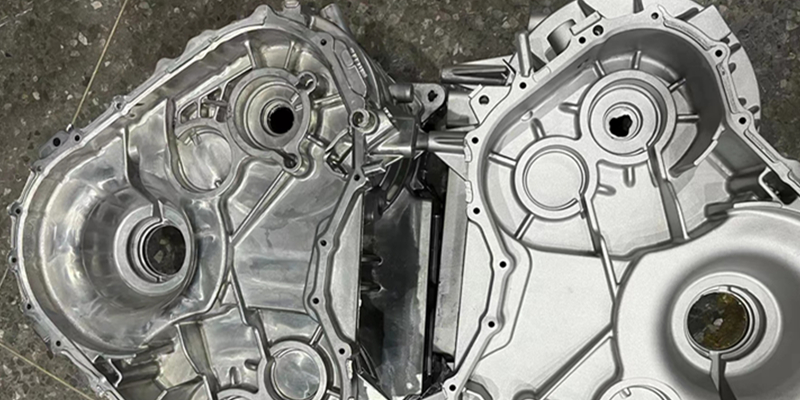Aluminum casting is a versatile and widely used manufacturing process that involves transforming molten aluminum into solid, shaped objects. This process is employed to create a diverse range of aluminum components, from simple shapes to intricate and complex parts used in various industries. The aluminum casting process includes several key steps, each contributing to the production of high-quality cast aluminum parts.

1. Pattern Creation:
The first step in the aluminum die casting process is the creation of a pattern, which serves as a replica of the final part. Patterns are typically made from wood, metal, or plastic. The choice of pattern material depends on factors such as the complexity of the part, the desired surface finish, and the production volume.
2. Mold Preparation:
The pattern is used to create a mold, which is a cavity or negative space representing the final part's shape. There are two main types of molds used in aluminum casting:
Sand Molds: In sand casting, a mixture of sand and a binder material is packed around the pattern to create the mold. This method is versatile and suitable for producing large, complex parts.
Permanent Molds: Permanent molds, typically made of metal, are used in processes such as die casting and gravity casting. These molds can withstand repeated use and are suitable for high-volume production.
3. Mold Assembly:
For complex parts or those with internal features, molds may be composed of multiple parts that come together during the casting process. The mold assembly ensures that the molten aluminum flows into all areas of the mold, creating a complete and accurate reproduction of the pattern.
4. Preparing the Molten Metal:
Aluminum, in the form of ingots or recycled scrap, is melted in a furnace. The temperature at which aluminum melts is approximately 660.3 degrees Celsius (1,220.5 degrees Fahrenheit). The molten metal is carefully controlled to achieve the desired temperature and composition.
5. Pouring the Molten Aluminum:
Once the molten aluminum reaches the appropriate temperature, it is poured into the prepared mold. The pouring process must be carefully controlled to avoid issues such as turbulence or air entrapment, which could result in defects in the final casting.
6. Solidification:
After the molten aluminum is poured into the mold, it begins to cool and solidify. The solidification process is critical in determining the final properties of the casting, including its strength and integrity. Proper cooling rates and control of the solidification process are essential to achieve the desired material properties.
7. Mold Removal:
Once the aluminum has solidified, the mold is opened or broken apart to reveal the cast part. In sand casting, the sand mold is typically broken away from the casting, while in permanent mold processes, the mold can be reused for subsequent castings.
8. Finishing and Post-Processing:
The freshly cast aluminum part may undergo various finishing processes to meet the specified requirements. These processes can include machining, grinding, polishing, or surface treatments to achieve the desired surface finish and dimensional accuracy.
9. Inspection and Quality Control:
The final step in the aluminum casting process involves inspecting the cast parts for defects, dimensional accuracy, and overall quality. Various non-destructive testing methods may be employed, including visual inspection, X-ray, or ultrasound, depending on the requirements of the application.
10. Machining (Optional):
In some cases, cast aluminum parts may undergo additional machining processes to achieve tight tolerances or specific geometries. Machining is often employed when the casting's dimensional accuracy needs to meet precise specifications.

Aluminum casting finds applications across a wide range of industries, including automotive, aerospace, construction, and consumer goods. Common products produced through aluminum casting include engine components, cylinder heads, structural parts, heat exchangers, and various decorative and functional components.
Lightweight: Aluminum is a lightweight material, making cast aluminum components ideal for applications where weight is a critical factor, such as in the automotive and aerospace industries.
High Strength-to-Weight Ratio: Despite its low weight, aluminum offers excellent strength, providing a high strength-to-weight ratio in cast components.
Corrosion Resistance: Aluminum naturally forms a protective oxide layer, giving it corrosion resistance and making it suitable for applications in harsh environments.
Versatility: The aluminum casting process is versatile, allowing for the production of a wide variety of shapes and sizes to meet diverse design requirements.
Cost-Effectiveness: Aluminum casting can be a cost-effective manufacturing method, especially for high-volume production runs.
In conclusion, the aluminum casting process is a well-established and versatile method for producing a wide range of components with varying complexities. From simple sand casting to precision die casting, the process accommodates diverse manufacturing needs across industries, providing an efficient and cost-effective means of turning molten aluminum into functional and high-quality parts.